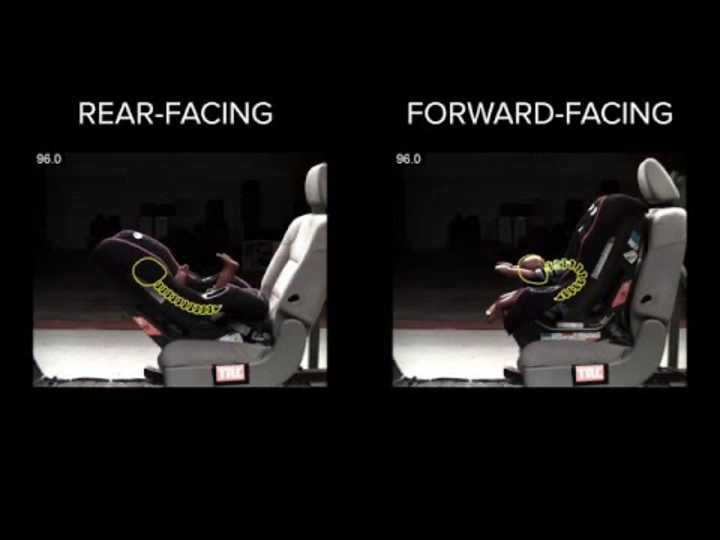Car Seat Information | Car Seat Fitting Stations | Car Seat Guidelines | FAQ's
Frequently Asked Questions
Statistically, the rear center seating position is the safest seating position in the vehicle for any occupant as it’s the furthest from any possible point of impact. That being said, it often does not work well when installing a car seat. This can be due to many factors that include, but are not limited to, smaller seating space, a large hump in the vehicle seat, other car seats in the vehicle, and seat belt/lower anchor limitations. When choosing between the rear driver and rear passenger seating positions, it is not statistically significant enough to be able to say that one side is safer than the other The safest seating position for your car seat is the seating position in which you can achieve the best installation.
The car seat should not move more than one inch side to side and front to back. Only check for movement at the belt path with the force of a firm handshake with your non-dominant hand. If the car seat moves more than one inch, it needs to be tightened more.
No. Choose either the lower anchors or the seat belt to install, never both at the same time. Both methods are considered equally safe as long as a proper installation can be achieved.
Different car seat manufacturers have different rules when it comes to allowing the use of mats or towels underneath of their car seats. Mats and towels can sometimes impede a proper installation or even mask a bad installation. Please reference your car seat manual to see if your car seat manufacturer allows the use of anything underneath of their car seats. If you can not find the information, please reach out to one of our fitting station coordinators.
Probably not. Leg space is perceived comfort as an adult. Children have soft bones and joints, making them much more flexible than an adult. Children may do whatever they want with their legs in a rear facing car seat (bend them, cross them, rest them on the vehicle seat back, etc.) This “soft bone” occurrence is especially true of the spinal column. Rear facing car seats keep a child’s head, neck, and spine in a straight line in the event of a collision, reducing the risk of severe spinal injuries. It is safest to keep a child rear facing as long as physically possible, until they outgrow the upper height and weight limit of rear facing mode of their convertible car seat.

Yes! All car seats have an expiration date that can be found on the car seat itself and in the car seat manual. Car seats expire due to degradation of materials. Even though a car seat may look fine on the outside, materials and mechanisms on the inside may break down over time.
Only use a car seat that you know the complete crash history of. When buying a car seat from a stranger, you may not know if they are telling the truth about the crash history. If a used car seat is chosen, please still register the seat with the car seat manufacturer so you will be notified of any recalls. This can easily be done on the car seat manufacturer’s website.
It depends. Different car seat manufacturers have different crash replacement policies. Please check your car seat manual for this information. When in doubt, call the car seat manufacturer directly. The car seat manufacturers phone number should be located on the car seat label which is a white sticker located on the back, side or underside of the car seat.
No. Mirrors are a distraction to the driver. Most find that they look at the mirror far more often than is necessary, which takes their eyes off the road in front of them. Mirrors also become a projectile in a collision.
A list of all car seat recalls can be found here: Car Seat Recalls.
Yes! Registering your car seat ensures that you will be notified of safety recalls by the car seat manufacturer. Car seat manufacturers are not allowed to use that information for marketing purposes.
Plan to stop every two hours to let everyone out of the car and all of the children should come out of their car seats to stretch.
It depends. Check you car seat manual and labels to determine if it is FAA certified. Booster seats cannot be used on airlines. The safest place for a child is in their own car seat that’s appropriate for their age, height and weight and not on a caregiver’s lap. If you plan to check your car seat with your luggage, be sure to put it in a box to avoid potential damage.
Maybe. Please contact one of our fitting station coordinators to see if your car seat brand and model allows for installation with inflatable seat belts.
Follow the cleaning instructions located in your car seat owners manual. Most car seat manufacturers allow the fabric to be washed with a mild detergent and air dry. The harness straps must never be submerged in water.


